Did you know that one of the world's quietest revolutions is happening right now in the heart of our factories? Industrial machines are evolving faster than anyone predicted, holding secrets that could reshape industries.
This surge in industrial automation is not just a phase; it’s set to change the future of production forever. But what’s behind this seismic shift that has experts buzzing more than ever?
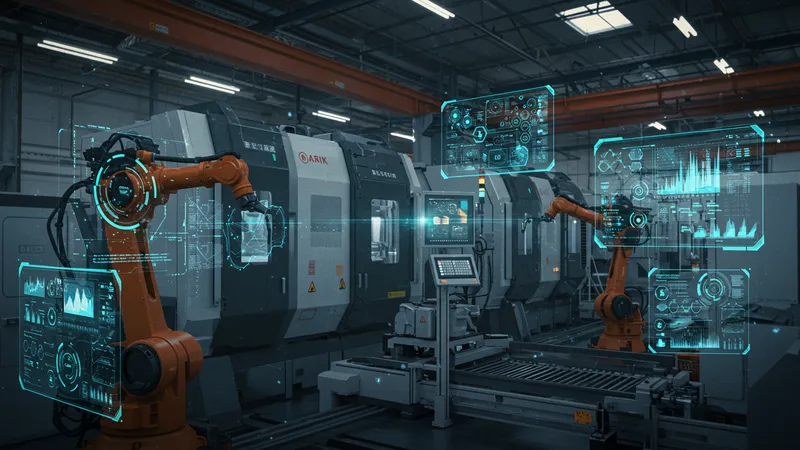
Consider this: emerging industrial machinery isn't just automating tasks; it's predicting, diagnosing, and sometimes even correcting itself. This leap forward could significantly reduce downtime, saving businesses millions. What’s really eye-opening is the potential job transformation that's on the horizon. But that’s not even the wildest part…
Imagine machines communicating flawlessly across continents, setting new standards for global efficiency. The integration of AI into these systems could mean less human intervention and more seamless operations. However, the cost of keeping up with such technology might surprise you. But that’s not even the wildest part…
The next phase of industrial innovation promises even more breakthroughs. What happens next shocked even the experts…
Automation is no longer a far-flung future vision—it's here, reshaping the industrial landscape with jaw-dropping speed. Many industries that once thrived on manual labor are seeing machines take over, delivering levels of precision and efficiency that are genuinely unprecedented. This marks a revolutionary era where production timelines and productivity metrics will never be the same. But the real kicker is the unforeseen socio-economic implications, which nobody discussed enough—until now.
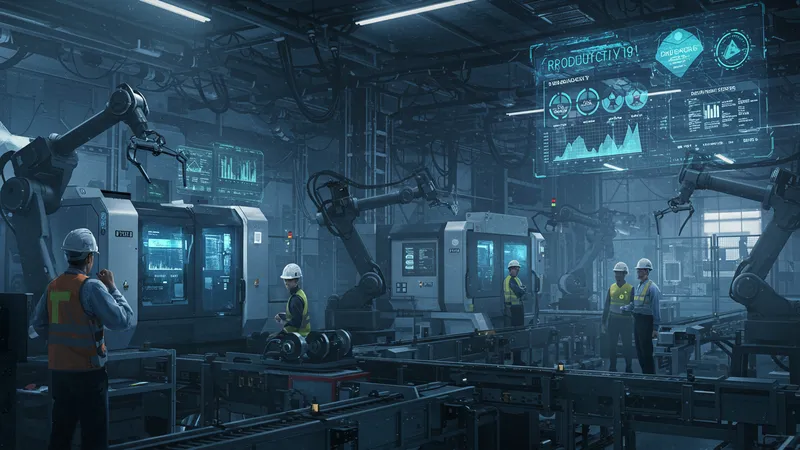
Statistical insights reveal that in some sectors, automation has driven down operational costs by over 40%! This financial liberation is enabling companies to redirect resources towards innovation and expansion. It’s a win-win, or is it? What often goes unnoticed is the toll on employment sectors and the astonishing number of jobs susceptible to this automation wave. But there’s one more twist…
Even the smallest manufacturing units are now investing in automated machinery, believing it will grant them a competitive edge. The secret they are discovering? The substantial drastic reduction in energy consumption these machines bring, often lowering their energy costs by 20%. These financial incentives are hard to ignore, but what about the environmental impact? What you read next might change how you see this forever.
As the adoption of machines skyrockets, so does the need for training and skilled personnel to manage these tools. We’re not just talking about traditional learning scenarios; the entire business education model is undergoing transformation, with online and hands-on training becoming pivotal. The trick to staying relevant might be hidden in these training programs tailored for the future of work. But what happens when technology advancements outpace the rate of skill acquisition?
While the march of machines is set to revolutionize production, there lies an undercurrent of ecological concerns that could rewrite the ethical playbook of industrial operations. We're looking at machinery that, though efficient, could be compounding ecological degradation without thoughtful innovations in sustainable engineering. It's a challenging dichotomy that has owners questioning where they fall on the ethics scale as they clamor for profitability and greenness in equal measure.
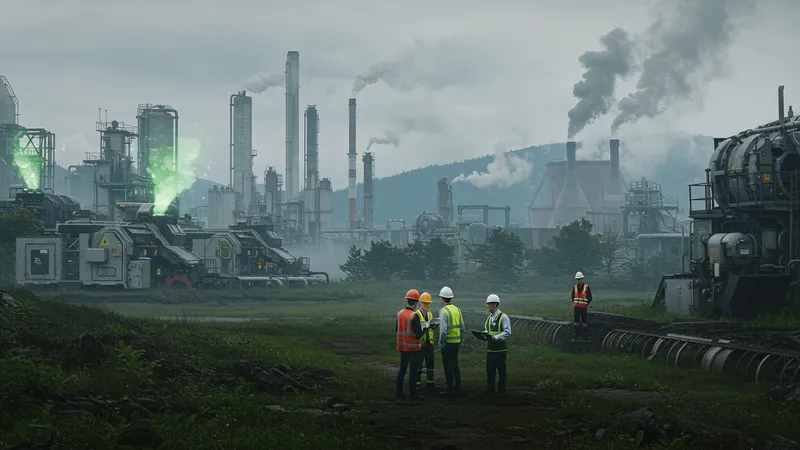
One startling discovery is the potential reduction of industrial emissions by 30% with the implementation of eco-friendly machinery. But is it enough? A closer examination shows that while some companies are meeting these 'green' criteria, many are still struggling to find that perfect balance between advanced technology and environmental stewardship. The hard truth is, it's not just about having eco-friendly machines; it's about a change in mindset and policy from top to bottom. But there’s a hidden layer…
Furthermore, the race for ethical machine manufacturing is heating up. There's mounting pressure on companies to adhere to social responsibility norms while maintaining productivity. This unsolved Rubik’s Cube of ethical manufacturing continues to challenge the brightest minds, who propose that perhaps the clear path forward involves deeper transparency in the supply chain. Many haven’t anticipated this would be the sticking point holding back widespread reform. But what if there’s a simpler solution?
Enter ethical audits. These frameworks could very well revolutionize industry standards, acting as both watchdog and guide, holding corporations accountable and encouraging sustainable practices. But are these sufficient to override decades, even centuries, of entrenched industrial practice? As debates heat up, and sustainability consultants increase in demand, a new global standard might just be the catalyst for change everyone in the industry has secretly hoped for. What happens when consultants and corporations finally see eye-to-eye is anyone's guess, but it might just be the jolt needed for a new industrial revolution.
Let's delve into technologies that are fast becoming game-changers, unexpectedly flipping the script on traditional industrial processes. Machines today aren't merely labor-saving; they're visionaries in disguise, subtly steering industries towards more sustainable and innovative practices. The unveiling of IoT-enabled devices and AI-driven analytics are rapidly abolishing bottlenecks, making production flows smoother and more predictable than ever before.
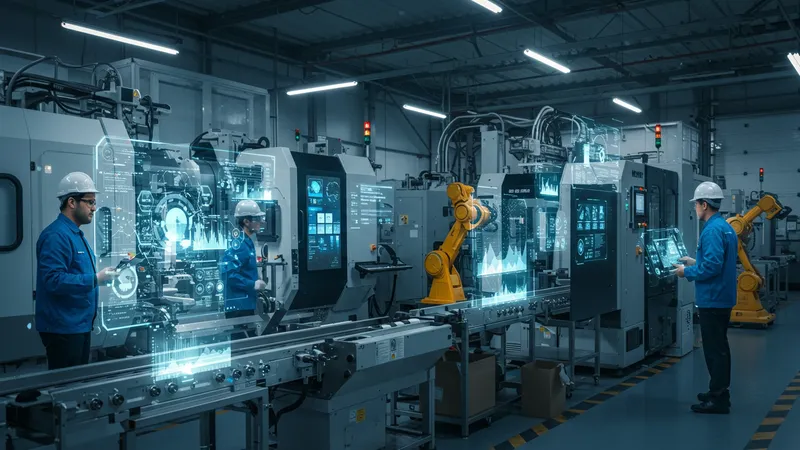
Some industries report productivity boosts upwards of 60% with the integration of smart technologies. Such significant enhancements bleed into everything from supply chain logistics to inventory management, manifesting as reduced wastes and bolstered profits. The fascinating aspect is not just how these technologies improve efficiency, but the uncharted potentials they unveil in worker and machine collaborations. But how is this different from the tech hype of yesteryears?
A genuinely transformative technology often goes unnoticed: augmented reality (AR) in machine maintenance. It’s a revolution that few are talking about yet, but its potential is boundless. With AR, technicians can overlay virtual guides onto physical machinery, drastically cutting down on errors and time spent on repairs. Though relatively new, the promise AR holds is not just convenient; it could redefine what we think of as a skilled trade. But will AR transcend into other areas as well?
As promising as these advancements are, they also bring a new layer of complexity. The intricacies of integrating these technologies across diverse operations can be daunting. Companies face steep learning curves and require substantial investments in new IT infrastructure. Yet, the consensus is clear: those who master this phase early stand to gain immense first-mover advantages. And just when you think you've got it figured out, there’s always another hurdle. The journey doesn’t end here, not with the continuous stream of innovation on the horizon.
Automation and cutting-edge machines are blazing a trail into the epicenter of industrial workplaces, necessitating a workforce evolution that we could not afford to ignore. As machines take on increasingly sophisticated tasks, the demand for human labor is shifting in unprecedented ways, arguably for the betterment of future generations who must now engage with technology more intimately than any before.
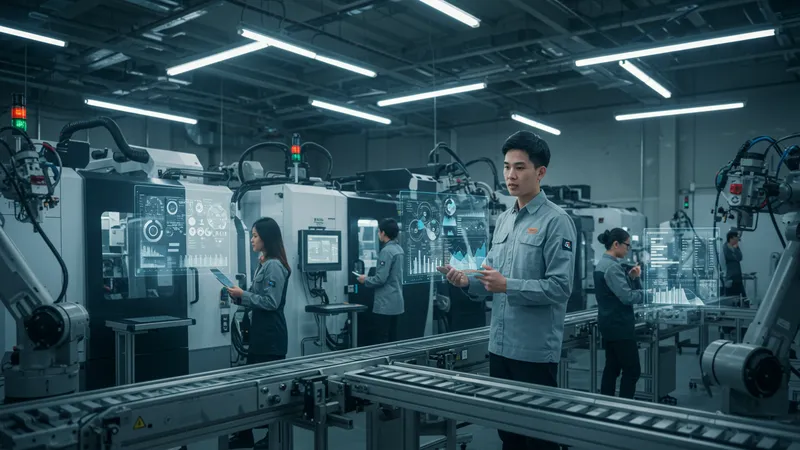
The evolving landscape introduces roles that merge technical prowess with creative thinking—skills once thought incompatible are now in thrilling tandem. There's a projected surge in demand for machine learning experts, among others, with growth charts hinting shifts upwards of 50% in some sectors. But there's more under the surface, especially when considering who will guide this new era's professionals.
Traditional education systems are grappling with this change, attempting to fit the mold of these new professional paradigms. More pragmatic and forward-thinking approaches are sprouting: boot camps and micro-credentials, which offer a fast track into the tech-rich corridors of industry. These learning formats promise flexibility and speed—an irresistible offer to both individuals and enterprises out to remain competitive. But how sustainable are these educational models long-term?
Seasoned experts argue that while short-term skill acquisition is invaluable, the true metric of workforce transformation lies in a culture shift—a readiness to learn and unlearn continuously. Industry veterans opine that adaptive learning models tailored to keep up with swift tech advancements are no longer a luxury but a necessity. The road ahead may require businesses to foster environments that cherish and cultivate lifelong learning. But will tradition or innovation dominate?
Behind every industrial innovation lies a labyrinth of cost-benefit dilemmas that plague decision-makers. Striking the optimal balance between investment and return has never been more intricate, particularly in light of the exorbitant cost of cutting-edge machinery. The allure of sleek, efficient operations often glosses over the nuanced financial gymnastics required in procurement and maintenance.
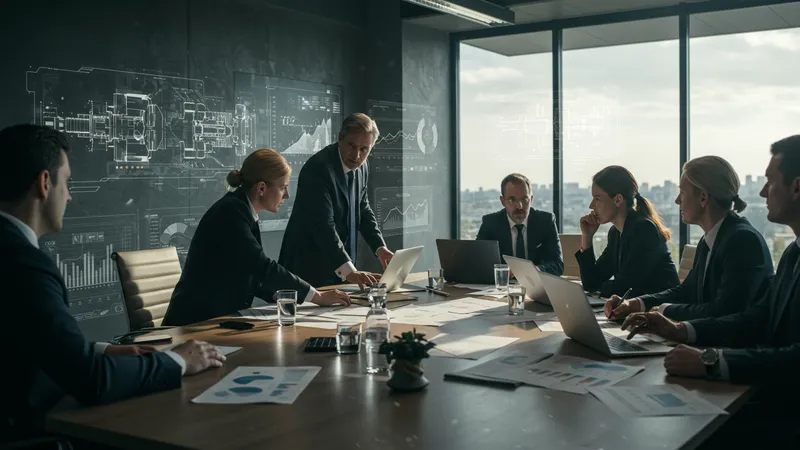
Interestingly, while high-tech machines are an upfront investment, industry data indicates companies could recoup costs within as little as three years through enhanced efficiency and reduced waste. It's a significant lure—the sort that fuels boardroom debates and investor pitches alike. What's less broadcasted, though, are secondary benefits: lower employee turnover and improved capital utilization. Could the answer really be as straightforward as it appears?
Detractors argue that the allure of instant payback oversimplifies what is often a more complex equation. With every machine comes hidden costs: training, integration, and sometimes unanticipated operational downtimes. The resulting paradox leaves many managers tussling with whether to push forward or retreat cautiously. But it's a gamble with profound implications on a company's long-term trajectory.
As cost-benefit analyses evolve, one emergent strategy is gaining traction: phased technology implementation. This approach seeks to de-risk investments by incorporating technologies incrementally, allowing for adjustments along the journey. Organizations adopting this model are ostensibly better equipped to adapt rapidly to technological advancements and market fluctuations. Yet, it demands a tenacity unto transformation. But that's just the tip of the iceberg, as you’ll soon discover…
With the race to technological supremacy in full swing, industries are seeking any edge they can find to stay ahead. Automation and machine learning have already rewritten the competitive playbook, yet there's a subtext of strategies that often go unnoticed and unexplored, particularly by those outside boardroom circles.
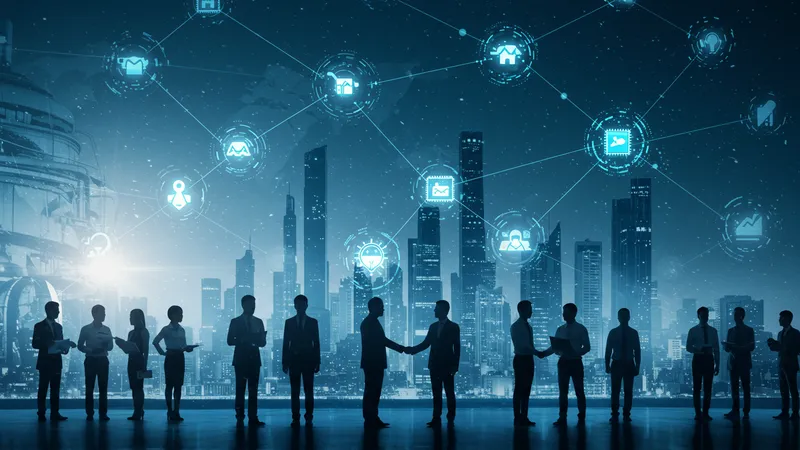
Delve a bit deeper, and you’ll uncover a trend that surprisingly few are utilizing—inter-industry collaborations. This approach takes the ethos of "sharing economy" into industrial terrains, where partnering with seemingly non-competitive firms provides varied perspectives and resource sharing that few single entities can muster alone. The dawn of this era could redefine what competition even means.
Furthermore, the blurring lines between tech giants and manufacturing firms signal a converging future. Pioneering enterprises—those blending hardware expertise with software insights—are establishing themselves as hybrid powerhouses. They're blazing trails that could eventually form the backbone of future industrial paradigms. Could this merge of model archetypes be just what the industry needs to leapfrog into the next decade?
Those capitalizing on these unconventional strategies inevitably gain market foothold, forcing competitors to rethink and recalibrate their standing. However, some argue this creates an uneven playing field; the barriers to entry have morphed into hurdles of agility, adaptation, and collaborative innovation. Yet as we explore further, we’ll find the lines blurring even more, leading to unexpected alliances and innovations.
Policy frameworks are, more often than not, the unsung architects behind groundbreaking industrial innovations. The interplay between regulation and innovation is vital, yet the balance remains precariously delicate. Legislators find themselves straddling the line between regulation that maintains public welfare and policy that encourages unfettered technological growth.
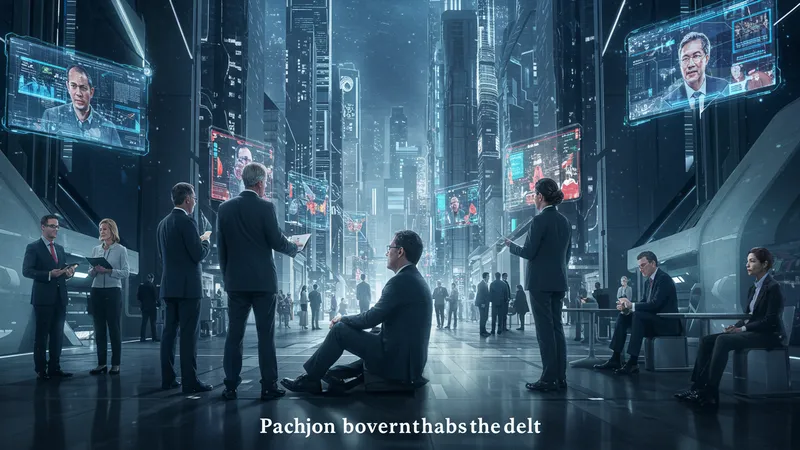
Astonishingly, some of the most profound innovations have sprouted from regions with progressive policy support, where governments enthusiastically endorse and fund technological advancements. Bridging the gap between traditional industries and modern regulatory environments is no small task, but those who manage it redefine what industrial success looks like.
However, these advancements necessitate a reimagined regulatory landscape where agility is paramount. It's a complex symbiosis: industries need to know they can innovate without the stiflements of outdated laws, yet policy-makers must ensure that innovation doesn't gallop unchecked into regions that could be harmful. This requires an unprecedented level of dialogue and cooperation between policy-makers and industrial leaders.
The challenges of harmonizing policy with progress are myriad, particularly when technological evolution outpaces regulatory amendments. But within these tests also lie opportunities for impactful change. Industrial leaders are often called upon to collaborate in policy-shaping, steering their fate more directly than ever before. The question is, will they grasp this chance, or let policy dictums shape them instead?
As we usher in the era of Industry 4.0, investment strategies are undergoing seismic shifts. Investors are not just placing their bets on immediate financial returns, but on forward-thinking technologies that boast long-term innovative potential. This produces a challenging landscape where short-term profit versus long-term viability becomes a recurring theme in investment portfolios.
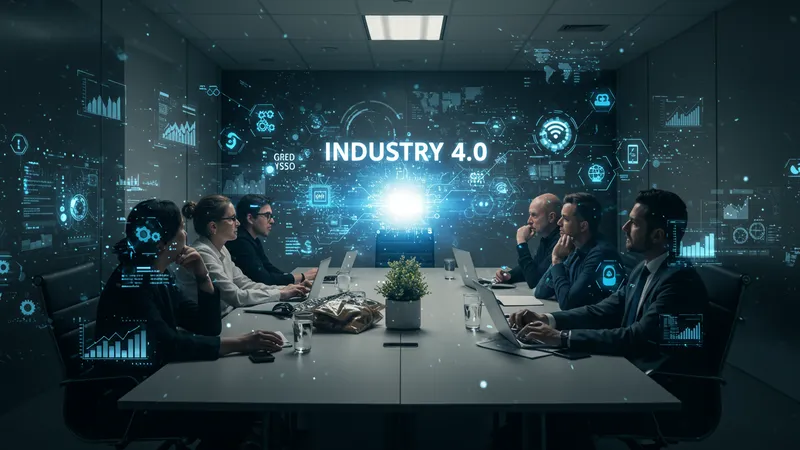
Surprisingly, sectors previously starved for funding are receiving a renewed influx of capital thanks to the rise of smart technologies. IoT and AI, once reserved for tech behemoths, are now within reach for startup investors dreaming of disrupting age-old industries with fresh approaches. But how reliable are these investments when the pace of technological obsolescence is accelerating at breakneck speed?
The dynamic nature of this new industrial wave necessitates an adaptive investment outlook, with an emphasis on scalability and resilience. The smart money flows toward solutions that promise agility in dealing with technological shifts. Yet, as always, investors wary of bubbles are left to ponder: could these rapid developments be a bubble waiting to burst, or is it an exponential trajectory stretching further than we're prepared to imagine?
As venture capital accelerates into industrial spaces, it's vital for enterprises to redefine their investment priorities. The imperative to blend financial prowess with technological acumen has never stood so paramount. The convergence of these realms could potentially catapult companies into the limelight, but only if rivalries and partnerships align in fascinating, yet unseen ways. So, the real query is: who's ready to take that leap?
The dawn of advanced machines has invariably altered the workplace dynamic, ushering in an age where seamless human-machine collaboration is no longer speculative fiction but emerging reality. Companies are striving to foster conditions where human intelligence composes harmonious duets with machine efficiency. It's an evolution that stands to redefine productivity and creativity in equal measure.
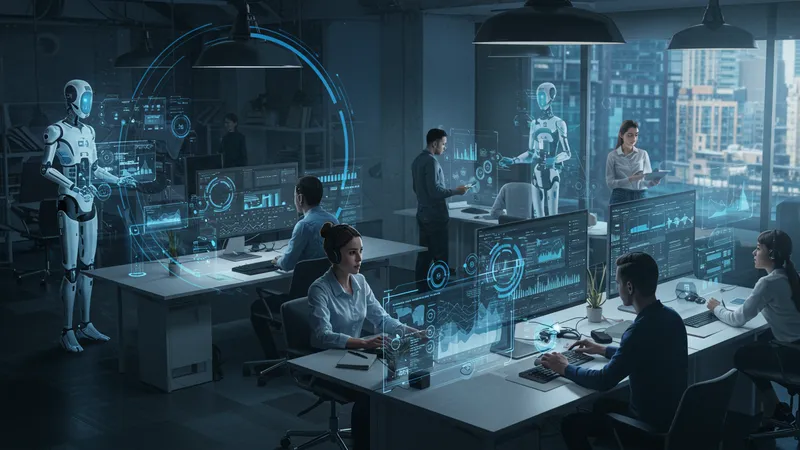
The perceived divide between human workers and machines is narrowing as systems become increasingly intuitive. We've begun witnessing AI take on roles traditionally burdened by human biases, like HR analytics, where impartial assessments highlight unforeseen enhancements in employee engagement and satisfaction. But what's the cost of such sophisticated collaboration on traditional human roles?
Manufacturing floors, traditionally bustling with manual intervention, are being reimagined as spaces where robots and humans coexist, each complementing the other's strengths. Here, safety standards are paramount, and the marriage of compliance and productivity often poses a formidable challenge. Overcoming these hurdles not only demands innovation of machines but also revolutionizes HR protocols, ensuring that the workforce is both safe and effective.
While some speculate on the threat of machines eclipsing humans in workspace relevance, the real potential lies in nurturing environments where machine learning enhances human creativity. The confluence of creativity and technology could birth industries yet unimagined, provided enterprises are willing to embrace change fearlessly. But can industry leaders manage the delicate tango of preserving human capital and at the same time advancing the machine-led future?
The path to adopting new technologies riddled with promises and pitfalls has never been straightforward. Rather, businesses face a labyrinth of challenges: from capital investments in tech to the simultaneous need for skill acquisition among ever-evolving workforces. Navigating this terrain demands not just foresight but also a readiness to pivot swiftly and confidently.
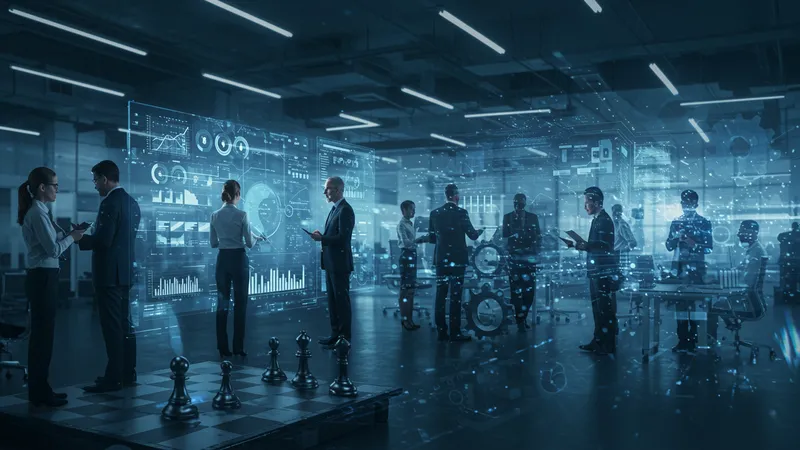
Surveys show a whopping 60% of business leaders cite integration challenges as a primary barrier, not to mention the cultural resistance many organizations face internally. Often, the biggest hurdle is not acquiring the technology, but reengineering company mindset and workflows to fully utilize its capabilities. But is a mindset shift enough to transcend these substantial obstacles?
The incremental approach to tech integration, while seemingly risk-averse, sometimes falters when advancing incrementalism fails to match the rapid pace of innovation. Companies are gradually realizing that agility is not merely a buzzword but a crucial asset. The beauty and challenge lie in knowing when to accelerate adoption and expedite implementation at the risk of temporary disruption.
Yet, pockets of inspiration exist where tech adoption seamlessly dovetails with business growth. These innovators blend robust strategy with experimental agility, nudging the cusp of innovation while anchored in practical industry realities. The quandary remains: can these success stories be codified into best practices or will they remain elusive exemplars most organizations can only dream of?
As industrial technologies seep into mainstream relevance, small businesses find themselves at an intriguing crossroads. They stand at the cusp of expansive technological accessibility, a realm once confined to corporate giants, now open to nimble and visionary enterprises willing to take the leap. Yet, with such opportunities come significant challenges that could derail them if not navigated astutely.
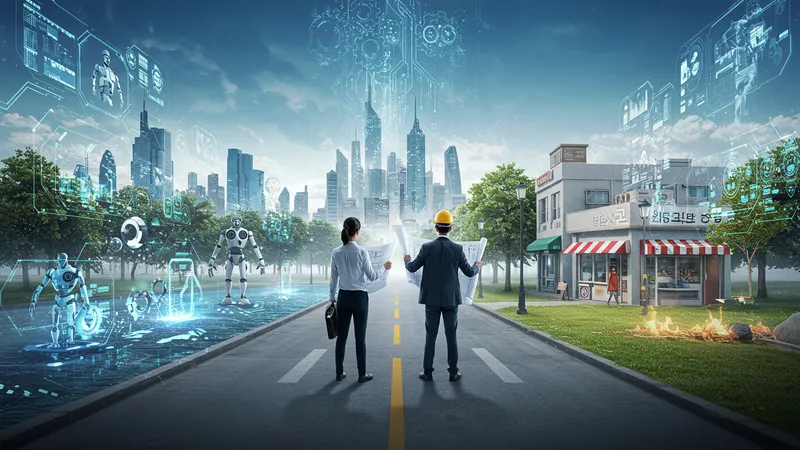
For a small business, investing in automation can mean leaps in operational efficiency, leaning towards a possible surge in profitability. However, without a strategic blueprint and a clear understanding of technology’s transformative potential, many small firms risk overextending their financial and operational capacities. The real enigma they face is how to grow without growing too quickly.
Remarkably, alliances between small and large enterprises are forming against this backdrop, with mutual knowledge and resource exchanges crafting a new chapter in industrial relations. It's a collaboration that's not only reshaping financial landscapes but also cultural ones, developing ecosystems where traditional competitive barriers melt away. So, is collaboration the panacea for small business challenges?
There's a broader perception shift as smaller entities increasingly embrace role adaptations, akin to forging new paths within their niches while optimizing tech-based operations. As they stride towards these horizons, fostering inherent innovation could emerge as a dominant theme. But even as they endeavor towards innovation, can small businesses resist the gravitational pull of conformity that larger entities often impose?
The technology boom sweeping across industries has incited a reskilling revolution. The intrinsically woven nature of tech into the industrial fabric has made renewing skill sets a matter of survival for many professionals. The stakes are high and the rewards immeasurable, each step toward this future unearths both hurdles and triumphs that echo throughout every echelon of the business realm.
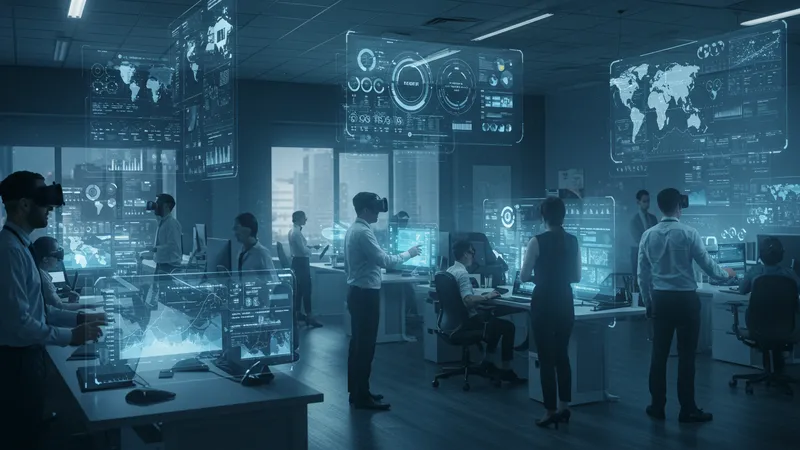
Statistics highlight a stunning 35% increase in demand for tech-savvy professionals annually, a testament to the seismic shifts reshaping the workforce. However, the urgency of this evolution has caused educational institutions and corporate training programs to reassess their offerings, pivoting towards rapid deployment models that better match the velocity of industrial demands. Could this recalibration fully prepare the next generation of workers?
Notably, the newfound emphasis on tech skills does not diminish the need for traditional expertise. Instead, it crafts a harmonious blend of knowledge domains—an intellectual alchemy that promises richer, deeper problem-solving prowess compared to past generations. Breaking barriers, this is more than merely a reskilling initiative; it is a reimagining of the worker's role in harmony with the tech that surrounds them.
The real challenge lies not in the act of reskilling itself but in fostering a culture that celebrates such perpetual growth with adequate support from leadership. Enterprises fortunate enough to interpret this cultural metamorphosis correctly stand to unleash a wave of innovation fuel. Those oblivious to the beat of this change risk stagnation. But will companies recognize and cultivate this dance of evolution in time?
In conclusion, industrial machines are propelling the modern era into an uncharted yet thrilling future. The terrain is riddled with opportunities and challenges, emphasizing agility, ethical considerations, and strategic adoption. Businesses that adapt swiftly will thrive, forging new paths in productivity and collaboration. As industries evolve, sharing this narrative could be the key to unlocking the collective potential of machines and human ingenuity. Make sure to spread the word—bookmark, share, and dive into the future of industry.